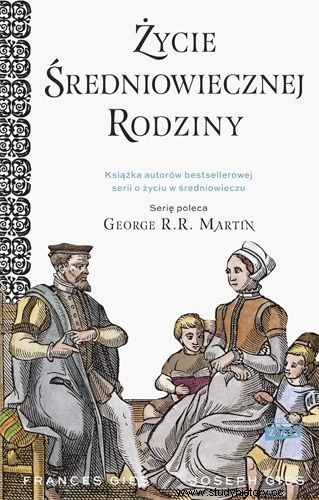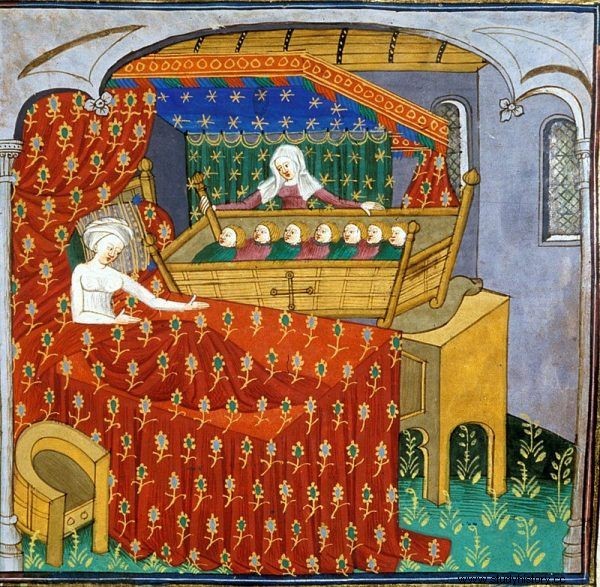Four Jakub, three Zuzie and two Julki in one class? While modern parents come out of their skin, as long as their child bears a special name, in the Middle Ages, in such a situation only would be shrugged. 600 years ago, it was not uncommon for siblings to share not only blood ties, but also names ...
The fact that children in the Middle Ages "inherited" their ancestors' names is not surprising. It is enough to try to count Henryków among the Silesian dukes or pick up the first better rulers - only among the Polish monarchs, from Mieszko I to Casimir the Great, we had five Bolesławów, four Władysławów and three Mieszko and Kazimierz.
Medieval name repertoire
Typically, this "generational transmission" took place from every second generation - and the sons were given the names of their grandparents. However, it happened (and not infrequently) that boys were named after their father, and girls - after their mother.
This is understandable in a way. Medieval tradition allowed for a fairly narrow group of "worthy" names. Parents often cared that the child had a "good" saint patron - hence, in "our backyard" there were countless little Janów, Piotrów, Stanisławów, Ann and Katarzyna.
Interestingly, the situation was similar throughout Europe - although depending on the geographic location, the most popular names changed. For example, in English Norfolk, daughters were most often referred to as Margaret or Margery, Anne or Elizabeth, and sons were usually called William, John, Edmund or Walter.
It's not a bad thing if every other boy was named John in one town. But it also happened… in one family. In the Middle Ages, parents didn't have to worry about allegations of lack of creativity, so they didn't bother creating fancy names. The high mortality rate among the youngest was additionally conducive to baptizing other children with the same name - until they were finally "reported" to adulthood. But even if in the end there were two heirs with the same name left in the house, no one paid special attention to it.

However, how was it distinguished which child was meant? Frances and Joseph Gies in the book The Life of a Medieval Family suggest a possible answer to this question:
Barbara Hanawalt, who discovered that families of Londoners in the late Middle Ages often gave their children identical names , supposes that when addressing namesakes, nicknames were usually used - "Older" and "Younger".
John John is not equal
It happened, among others in the illustrious British Paston family. In 1444, John Paston had a second son. Though the head of the family was not at home, the young mother, Margaret, had no trouble choosing a name for the boy.
She named him after her godfather. It was unfortunate that this one was also called John during the baptism. As a result, the boys born only two years apart were given the same name (and identical to their father's name) . Well, at least - like a joke - Margaret didn't have to call everyone for dinner ...

It happened many times in the Middle Ages that several children from one family had the same name.
However, the presence of as many as three Johns in the Paston house caused some difficulties. As they mention in the book The Life of a Medieval Family Frances and Joseph Gies:
The Paston brothers' letters began to be distinguished shortly after they started appearing in the family correspondence, naming the older John as "sir." The younger John eventually received the title as well. noble, but that happened only a few years after his brother died.
In the addresses and signatures in letters, the father is "John Paston, Esq." or "John Paston the Eldest"; the first son is "Sir John Paston" and the younger son is "John Paston the youngest", "John Paston the younger" or simply "John Paston".

The matter became more complicated when the addressee of the letter - either deliberately or inadvertently - did not specify which John was meant. It is also unknown how the father and brothers addressed each other when they were all meeting. Historians, on the other hand, have dealt with the problem by simply ... by numbering individual Johns.
The same was done centuries ago - ordinal numbers also have many rulers and popes. Rather, it did not fool any of them that they had the same name as any of their predecessors. Ultimately, as Shakespeare wrote:"What is a name? What we call a rose would smell sweet under any other name. " So sometimes maybe it's not worth trying too much creativity ...
Source:
The text is based on the book by Frances and Joseph Gies Life of a Medieval Family , which has just been released by the Znak Horyzont publishing house.
